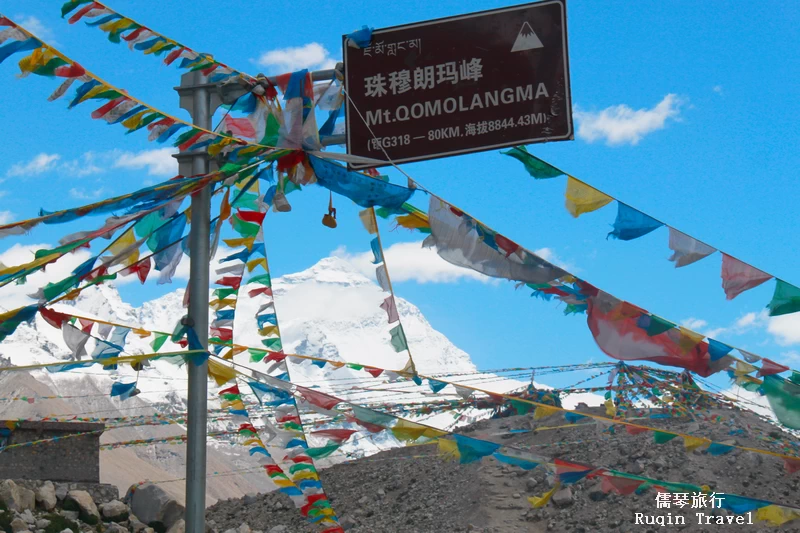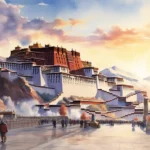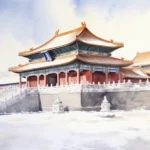On the morning of August 25th, 2011, a sense of excitement buzzed through our group of 25 as we settled into our 35-seat bus. We were about to embark on a journey unlike any other – a 108-kilometer drive from Pelbar (Baibacun) in Tingri to the revered North Base Camp of Mt. Everest in Tibet. This wasn’t just a trip; it was a pilgrimage to witness the world’s highest peak in all its snow-capped glory.
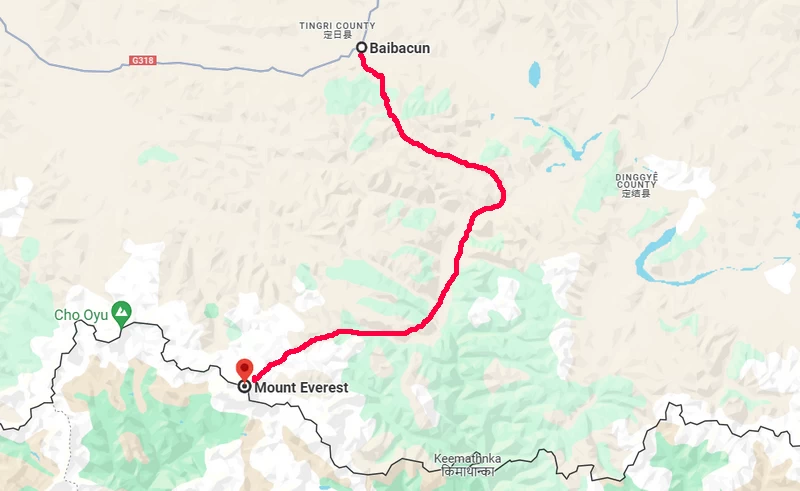
Preparation and Departure from Pelbar in Tingri
Tingri, a significant county in Tibet, was our starting line for this adventure. Known for its sweeping landscapes and as a gateway to Everest, this quaint county set the tone for our epic journey. The day before, we arrived at Pelbar (Baibacun) in Tingri County, a township that would be our launch pad. Nestled along the National Highway G318, this was more than just a pit stop; it was where anticipation met preparation.
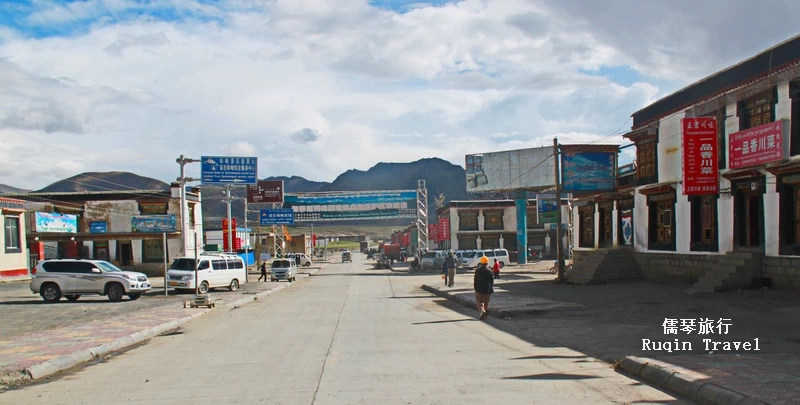
Our stay at Qomolangma Hotel in Pelbar (Baibacun) was short but essential. We spent the afternoon roaming the streets, collecting essentials like snacks, water, and for some, bottled oxygen – a prudent precaution considering the altitude we were about to face. As night fell, the hotel buzzed with adventurers discussing the next day’s early start. The staff, attuned to the needs of mountaineers and trekkers, had graciously agreed to serve breakfast at 4:30 AM.
The Journey Begins: Lugongong Police Checkpost
In the dim light of early dawn, we departed from Pelbar. The air was crisp and slightly biting, a reminder of the altitude and the day’s journey ahead. Our first major stop was the Lugongong Police Checkpost. Here, the reality of traveling in this part of the world set in.
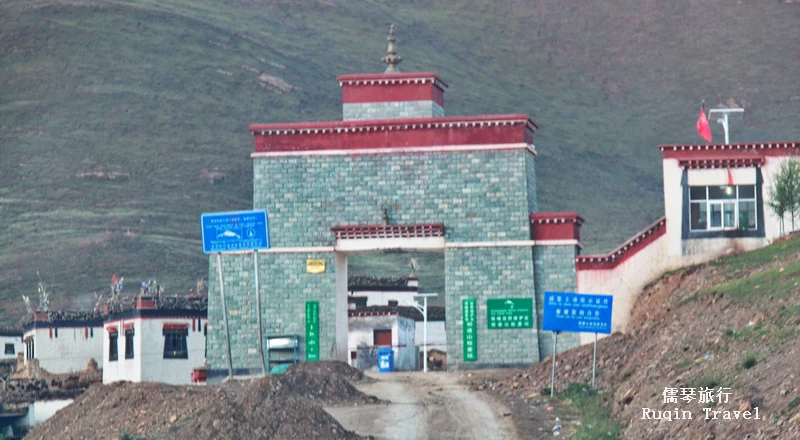
Every member of our group disembarked for a meticulous security check, a necessary step given the sensitive nature of the region. Holding our Tibet Travel Permits and Alien Travel Permits, we passed through the checkpoint with an air of anticipation. The process, while thorough, was a small price to pay for the privilege of approaching Everest.
The Rugged Road to Mt.Everest North Base Camp
Once past the checkpoint, our bus veered off the National Highway 318, and we faced the infamous dirt road leading to Everest. The road was a relentless mix of corrugated surfaces, deep potholes, and dust – a test of endurance for both the bus and its passengers. The 100-kilometer journey on this track was estimated to take 5 to 6 hours, a testament to its challenging nature.
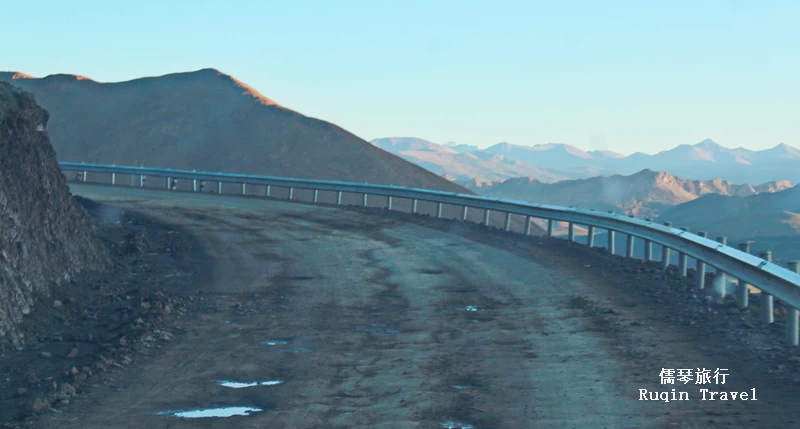
The bus jostled and bounced, making every kilometer feel like a milestone. Outside, the landscape transformed, offering glimpses of the harsh yet mesmerizing beauty of the Tibetan Plateau. This was not just a journey; it was an adventure unfolding with each turn of the rugged road.
Gyawula Pass: A Glimpse of the Majestic Everest
The ascent to Gyawula Pass was a journey within itself. Over two hours, we zigzagged up the mountain, each turn bringing us closer to the heavens. The anticipation built until we reached the pass, sitting at an altitude of 5210 meters. Here, we were greeted by a view that no photograph could do justice – the majestic Everest in all its glory, surrounded by its lofty peers: Lhotse, Qowowuyag, and Mayalu.
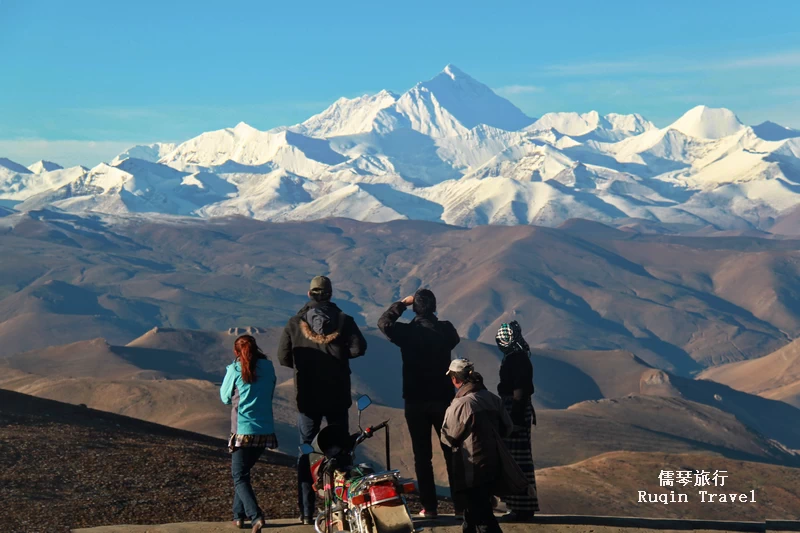
We poured out of the bus, cameras in hand, eager to capture the moment. The panorama was surreal, a tapestry of snow, rock, and sky so vivid it felt like a dream. We stood in awe, humbled by the sheer size and beauty of these giants. The pass was not just a viewpoint; it was a place of realization – the realization of how small we are in the grandeur of nature.
En Route to the North Base Camp
With Everest now firmly etched in our minds, we continued our descent from Gyawula Pass. The road, a serpentine path carved into the landscape, presented a new set of challenges. It was a slow and cautious drive through a world that felt untouched, with vast expanses of barren land stretching to the horizon.
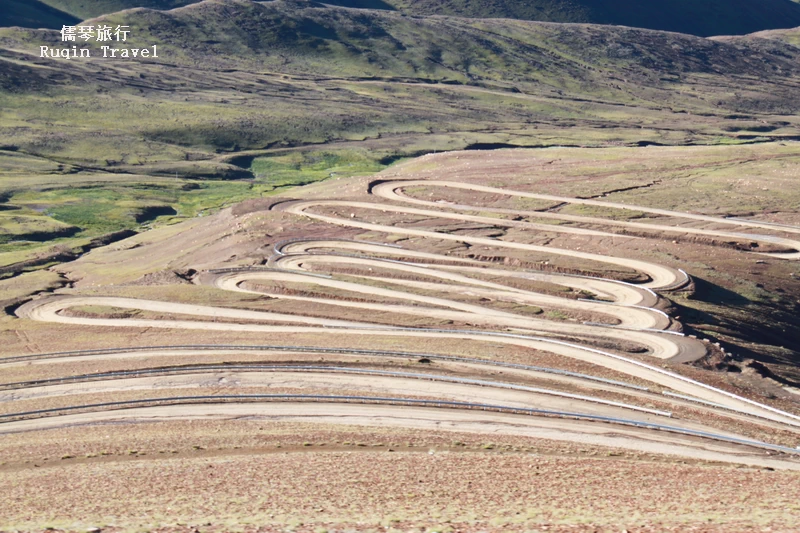
Along the way, we encountered signs of life that felt surreal in this remote setting. Tibetan settlements dotted the landscape, with nomadic herdsmen guiding their yaks across the plains. The sight of dzopkyos (yak-cow hybrids), wild rabbits, and sheep added a sense of vitality to the otherwise stark scenery.
Rongbuk Monastery: The Spiritual Gateway
Our next landmark was the Rongbuk Monastery, the world’s highest monastery, sitting at an elevation of 5154 meters. As our bus approached, the monastery appeared like a guardian of the valley, its walls steeped in spiritual history. The monastery, with its resident monks and nuns, felt like a bastion of peace and contemplation amidst the rugged terrain.

The view from Rongbuk was unparalleled – a direct line of sight to Everest, framed by the Rongbuk Glacier. This place was more than a rest stop; it was a spiritual gateway, offering a moment of reflection and awe at the foot of the world’s highest peak.
The Final Stretch: Za-Rombuk and Base Camp
Leaving Rongbuk behind, we made our way to the famed ‘Tent Community’ of Za-Rombuk, a midway point between the monastery and Everest Base Camp. This temporary settlement, a collection of tents run by locals, offered a unique glimpse into the communal life of Everest adventurers and trekkers.

Inside these tents, a sense of camaraderie prevailed. Stories were shared, and experiences exchanged over cups of steaming tea. The tents, while basic, provided a cozy refuge from the cold, with stoves burning yak dung for warmth.
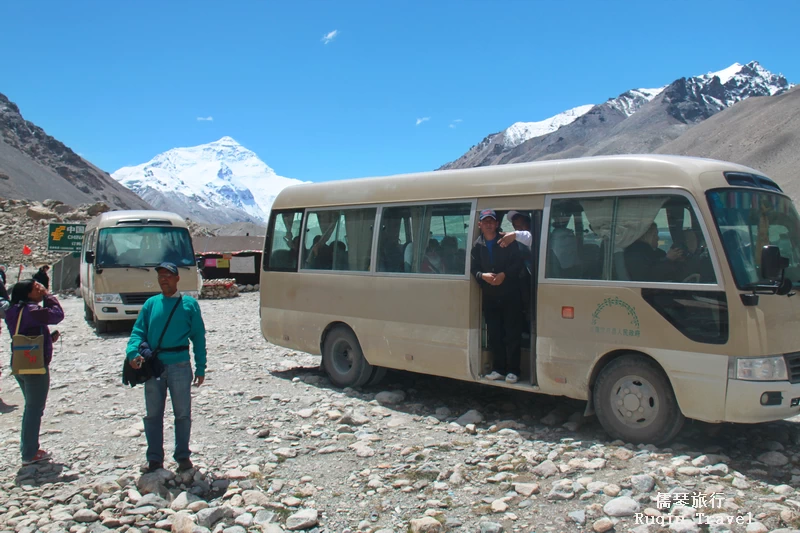
From Za-Rombuk, we switched to an environmentally-friendly shuttle bus for the final 4 kilometers to Everest Base Camp. The excitement was palpable as we neared our destination. The landscape around us was stark yet striking, a blend of rock, ice, and sky that seemed to belong to another world.
Mt. Everest North Base Camp: The Culmination of Our Journey
Reaching the Everest North Base Camp was a moment of triumph and humility. The security checks at the entrance were a small obstacle compared to the overwhelming emotion of standing at an elevation of 5,200 meters, gazing at the majestic Everest. The base camp, devoid of climbers’ tents in August, was stark yet beautiful.
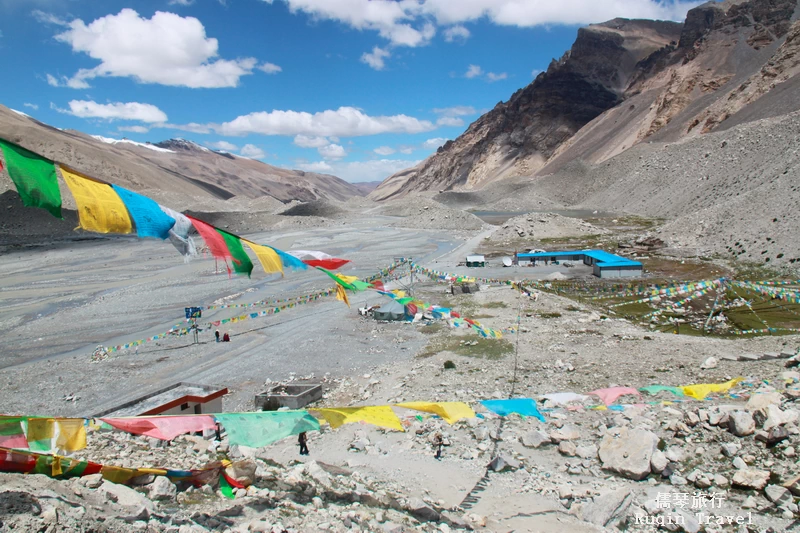
In that moment, we were mere specks against the colossal mountain, yet there was a profound connection – a realization of our smallness in the face of nature’s grandeur.
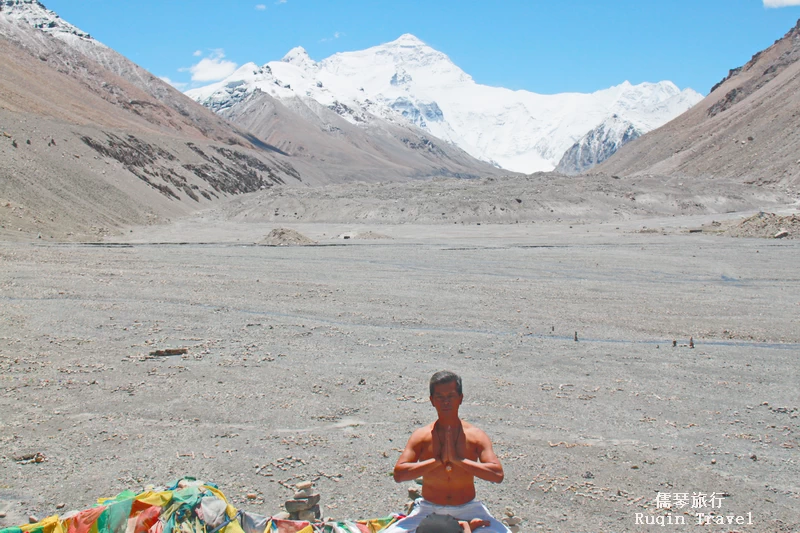
The Rongbuk River flowed nearby, adding to the serene yet powerful landscape that surrounded us. The clear blue sky, the rugged terrain, and the awe-inspiring Everest created a picture so majestic that it felt almost otherworldly.
Reflections and Travel Tips
As we retraced our steps back to Tingri, the journey offered a time for reflection. The experience was more than just a physical journey; it was a journey of the spirit, of pushing boundaries, and embracing the raw beauty of our planet.
For those planning a similar journey, a few tips can make the experience smoother and more enjoyable:
- Opt for Smaller Groups: Smaller vehicles like land cruisers are preferable over buses for better maneuverability on the challenging roads.
- Health Precautions: Carry bottled oxygen if you’re unsure about altitude adaptation. Also, consider bringing altitude sickness medication.
- Essentials: Pack enough water, snacks, sunglasses, sunscreen, and appropriate clothing to handle the temperature variations.
- Acclimatization: Stay a night in Tingri to acclimatize to the altitude.
- Permits: Ensure you have the necessary permits, including the Alien Travel Permit for Mt. Everest Base Camp.
- Best Times to Visit: The ideal months are March, May, September, and October for clearer views and more stable weather conditions.
If you have any questions or queries, then please feel free to drop us a line.

